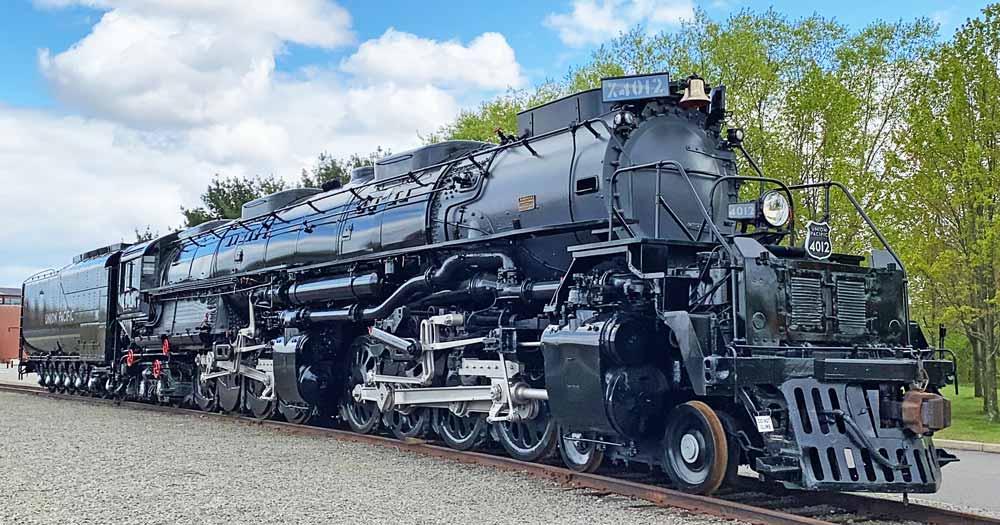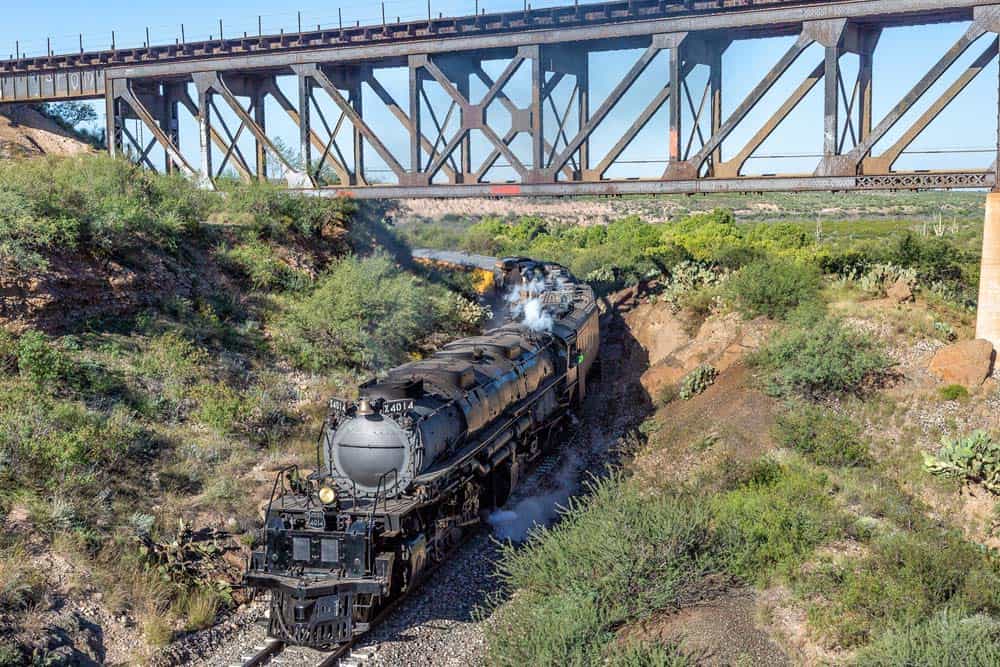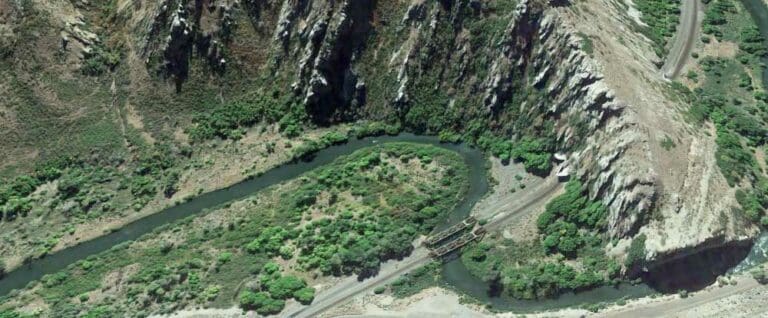How did Big Boy come to be called Big Boy?
Of all the steam locomotives in the long history of the rails, one of the greatest, many would say the greatest, is named Big Boy. The world remembers this name as the “Last of the Giants”, the steam locomotive that closed a memorable era in western railroading, and indeed closed the era of big mainline steam railroading in the United States.
The Big Boy is still the “Last of the Giants”, even with the surprising plot twist of a resurrection and restoration for Big Boy #4014. More on that below, but first we have to begin when there was no big Boy and before there was a “Big Boy” name.
The Big Boy story began in 1940 when the Union Pacific decided growing traffic amid the economic recovery after the great depression, and with war clouds looming on the horizon, justified a new kind of locomotive. Management predicted a big increase in traffic, and the Union Pacific had particular geography problems to conquer. They needed a locomotive capable of pulling – unassisted – long, heavy trains over the Wasatch Mountains, and the continental divide at Sherman Hill.
That same management had no plans to call their creation “Big Boy”. No, this new steam giant had a special purpose and was to be named for that purpose. Union Pacific President William Jeffers wanted the engine he commissioned to conquer the Wasatch Mountains – to be named the “Wasatch” class.

Why the “Wasatch”?
Up to three helper engines were needed to haul the long, heavy Union Pacific freight trains over the Wasatch Range of Wyoming and Utah. The continental divide, over Sherman Hill in Wyoming, comes in at just over 8,000 feet above sea level. The UP line through the Wasatch Range has grades of 1.14% and 1.77%. These grades are tough on locomotives.
The line through Wasatch mountains, called the Wasatch Grade by the railroad, is a 176-mile stretch of track which, heading east from Ogden Utah, begins at 4,300 feet above sea level and climbs the Wasatch Range to 7,300 ft at Aspen Tunnel before dropping back down through a series of curves and gorges to 6,100 ft at Green River, Wyoming.

The ruling grade, upgrade through the mountains, is 1.14%. That’s a steep climb for a train hauling 3,000 tons or more. The new 4000 class was expected to haul that route without the use of helpers. Helpers are expensive. Not only are the additional locomotives expensive to build and maintain, but the locomotives and crews often had to be stationed far away from other railroad facilities, at the top or bottom of a mountain pass – in the “middle of nowhere”.
Union Pacific’s Research and Mechanical Standards Department, headed by Otto Jabelmann designed this new “Wasatch” class in three months. It would be massive, with a wheel arrangement of 4-8-8-4 with a weight on those drivers of 545,200 pounds. Altogether the engine and tender would weigh over 1 and a quarter million pounds. It’s a lot of locomotive!
A Behemoth is Named
The American Locomotive Company (ALCo) in Schenectady, New York built the new design. And that is where the name Big Boy was attached to the “Wasatch” Class. The locomotive is indeed massive, with its tender it is over 132 feet long, and it stands just over 16 feet tall. (Get more of the amazing statistics in our article ‘Big Boy Stats”.) The boiler opening is more than 5 feet around. An unnamed worker at the Schenectady plant eyed all of this and in chalk wrote BIG BOY on the front of the boiler.
Life Magazine photographer Dmitri Kessel took the picture, the photo was published, and a name was born. At that point, it didn’t matter what management wanted, employees and the public clamored for the name Big Boy. And, seeing a public relations opportunity, management relented. Big Boy it would be. It’s a shame that the actual person to give the locomotive series a name is not known.

A Public Relations Success, for Decades
The Big Boy steam locomotive has turned out to be a public relations boon for the Union Pacific. Like no other steam locomotive, and the nation has had a love affair with steam for over 100 years, the Big Boy has become part of the nation’s lexicon.
In 1954, as part of “Robert Montgomery Presents”, NBC aired the 1 hour show “Big Boy” starring Ed Begley. It’s the story of an old steam locomotive engineer and his boy who wanted to be an engineer on the new diesel engines. That publicity continues today as Union Pacific rescued and restored Big Boy 4014 and sent the steam giant out to tour the huge Union Pacific rail system.
No private group, or rail corporation has ever restored a steam locomotive the size of Big Boy 4014. It took nearly 5 years of extensive work by a dedicated shop force at Union Pacific’s steam shop in Cheyenne, Wyoming. The cost is rumored to be over $5,000,000. Union Pacific is to be congratulated for its devotion to its past. Union Pacific placed a bet on history. A bet that history can help it tell the story of its future.

Big Boy Continues to Steam
In 2019 and 2021 as Big Boy #4014 toured the west and the western Midwest, thousands came out to view the behemoth in person. Million saw television coverage of the tour as it was covered by national networks and local television stations in Chicago, Kansas City, Los Angeles, Fort Worth, Houston, New Orleans, St. Louis, Oklahoma City, Las Vegas, Milwaukee, Tucson and more.
At each stop, the string of matching passenger cars Big Boy 4014 pulls includes a special car, “Experience the Union Pacific”. It includes a multi-media walk-through exhibition telling the Big Boy story, and the story of modern-day railroading and technology. What began in 1940, continues today. Union Pacific is still using the Big Boy class of locomotives for public relations!

Railfan and model railroader. Writer and consumer of railroad news and information.





